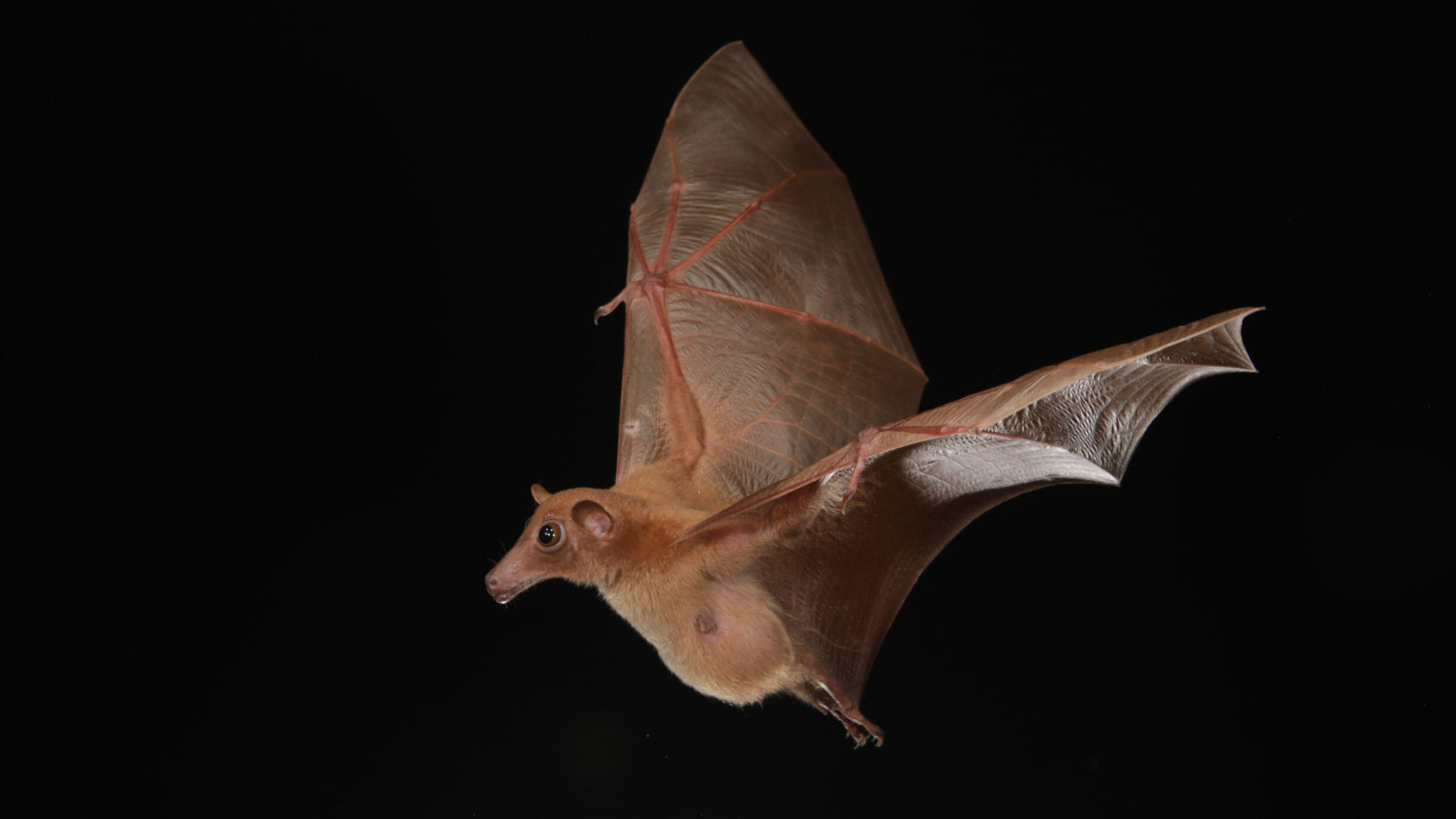 A long-tongued fruit bat (Macroglossus sobrinus).
A long-tongued fruit bat (Macroglossus sobrinus).© Pipat Soisook
This fall, the U.S. National Science Foundation (NSF) has awarded Museum scientists three multi-year grants to conduct research in wide-ranging areas, from bat biology to brown dwarf identification and DNA techniques to extract valuable information from historic specimens in Museum collections.
Bats and their bearings on ecosystems and human health
Bats play crucial roles in their ecosystems, including pest management, pollination, and forest regeneration. However, key aspects of bat biology remain poorly understood. To coordinate and drive forward research on bats—of which there are more than 1,400 living species worldwide, NSF is supporting the establishment of the Global Union of Bat Diversity Networks (GBatNet)—a group of 14 pre-existing bat research networks with a shared vision to address pressing questions related to ecosystems and human health. This “network of networks” brings together experts in paleontology, evolution, morphology, ecology, virology, genomics, and conservation.
“The goal is to better coordinate research and conservation on a global scale, but also to foster communication of accurate science about bats to the public,” said Nancy Simmons, curator and chair of the Museum’s Department of Mammalogy and one of three principal investigators for the project, along with collaborators from Stony Brook University and Texas Tech University. “GBatNet will fill key knowledge gaps and create an international structure to accelerate discoveries across disciplines and borders.”
Searching for new worlds lurking in our solar neighborhood
Since 2017, citizen scientists have identified more than 1,500 potential new worlds in our solar neighborhood on a platform co-founded by the Museum and funded by NASA called Backyard Worlds: Planet 9. The project challenges more than 150,000 participants from around the world to sift through images captured by NASA’s Wide-field Infrared Survey Explorer (WISE) mission, searching for previously unknown objects lurking in the outer reaches of our solar system and in neighboring interstellar space. The Backyard Worlds science team has confirmed a number of these discoveries as brown dwarfs, objects spread throughout the Milky Way that are more massive than planets but lighter than stars and highly relevant to studies about star and planet formation.
“When we first started Backyard Worlds, we recognized the potential of WISE as a discovery engine for nearby brown dwarfs, but I don’t think any of us anticipated just how active this citizen-science-fueled tool could be,” said Jackie Faherty, a senior scientist at the Museum and a principal investigator on the project, which will conduct follow-up telescope-based investigations on the backlog of candidate brown dwarfs identified by volunteers in addition to development of educational materials. The award is a collaboration with University of California San Diego and the University of Arizona.
Unlocking the incredible potential for museum specimens to yield DNA
Traditional museum collection specimens—a pinned insect, the “skin” of a bird, a lizard kept in alcohol, or the skeleton of a bat, for example—were once considered poor sources of DNA.
But recent advances in technology make them a potential source for historical DNA (hDNA) that could provide an unparalleled record of biodiversity over the last 200 years. “We are only at the beginning of unlocking the vast amount of information available in the millions of specimens stored in museums,” said Brian Smith an associate curator in the Department of Ornithology.
As principal investigators, Smith and Chris Raxworthy, a curator in the Department of Herpetology, will lead the sampling of amphibians (microhylids), reptiles (chameleons), and birds (lorikeets), ranging in age from 1-140 years and preserved with various techniques, which are now archived in the Museum’s collections, to develop new protocols for hDNA extraction and bioinformatic processing.
C. Raxworthy/© AMNH
“The goal of this work is to establish the optimal methods for obtaining hDNA from a specimen, whether it’s a chameleon that was collected 30 years ago in Madagascar and frozen or fixed in the field, or a parrot dry skin that’s been in the Museum’s research collection for the last 140 years,” Raxworthy said. “This project has the potential to increase by more than 100 fold the availability of historical DNA samples to scientists.”